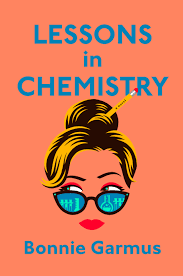Chapter 13: Idiots
byThe Hastings Research Institute spirals into a state of uncertainty and apprehension following the unexpected death of Calvin Evans, a scientist whose brilliance was matched only by his reputation for being notoriously difficult—some even labeled him among the “idiots” who made genius look chaotic. Evans’s absence leaves a gaping void not just in the institute’s research output but also in its credibility as a leading scientific organization. Investors, many of whom were drawn to the institute by Evans’s groundbreaking work, begin to question the sustainability of its operations without him. In a desperate attempt to reassure benefactors, the institute’s management emphasizes Evans’s contributions and the progress he made in his research. However, behind the polished statements lies a grim reality: without Evans, the institute lacks another scientist of his caliber to maintain its prestige and innovative edge.
Elizabeth Zott, a talented chemist working on cutting-edge research in abiogenesis, unexpectedly becomes a key figure in this unfolding drama. Her work begins to garner interest from a wealthy investor, offering a glimmer of hope for the institute’s beleaguered leadership. However, an embarrassing misunderstanding arises when the investor assumes that “E. Zott” is a man, a mistake that reflects the deeply ingrained gender biases of the time. The management team celebrates securing new funding, but their excitement is short-lived when they learn that Zott is not only a woman but also visibly pregnant and unmarried. This revelation sets off a wave of panic among the institute’s executives, who fear that her personal circumstances could lead to scandal and jeopardize their newfound funding.
As discussions about Zott’s future unfold, the institute’s management faces a stark dilemma. On one hand, they recognize the exceptional nature of her research and its potential to elevate the institute’s reputation. On the other, they are unwilling to deviate from the societal norms and prejudices that dictate women’s roles, particularly in professional settings. The debate turns increasingly hostile, with some suggesting that her work could be reassigned to a male colleague, despite the impossibility of replicating Zott’s expertise. Ultimately, the management’s decision is not driven by merit or science but by optics and fear of public backlash. Zott is dismissed from her position—not for her capabilities, but for her pregnancy and perceived impropriety.
The scene of Elizabeth Zott’s dismissal is fraught with tension and laced with hypocrisy. Surrounded by men who claim to uphold the values of scientific progress, she is instead judged on her personal life and subjected to condescending remarks about her suitability for the role. Despite the emotional weight of the moment, Zott remains composed, articulating a powerful defense of her work and highlighting the institutional biases that have thwarted her career. Her calm defiance underscores the injustice of the situation, serving as a stark reminder of the barriers that women face in male-dominated fields.
Elizabeth’s dismissal becomes a poignant commentary on the systemic sexism that pervades the scientific community and society at large. Her experience illustrates how women’s contributions are often overshadowed by arbitrary judgments and societal expectations, even when their work is transformative. The chapter not only critiques the hypocrisy of institutions that claim to value innovation but also sheds light on the resilience required for women to navigate these environments.
In the face of such adversity, Zott’s determination to continue her work remains unshaken. Her resolve to honor the integrity of her research and Calvin Evans’s legacy serves as a testament to her character and commitment to science. The chapter closes with a sobering yet hopeful note, emphasizing the need for systemic change while celebrating the strength of individuals who dare to challenge the status quo. By weaving together themes of gender inequality, professional integrity, and resilience, this chapter offers a compelling exploration of the personal and institutional challenges faced by trailblazing women in science.


